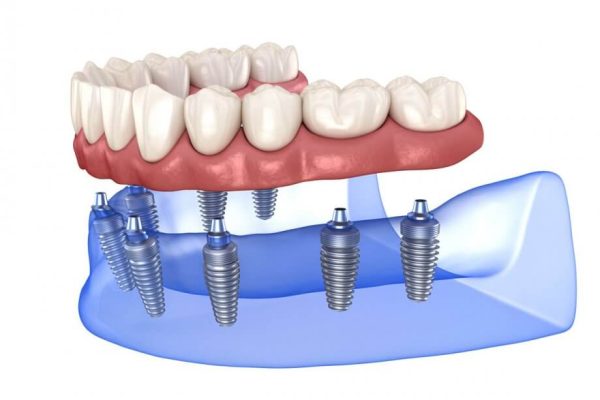Visiting the dentist is something all of us have to go through at some point. However, plenty of people have dental phobia or anxiety regarding undergoing dental procedures. Certain people postpone or even cancel their dental appointment due to their fears.
Patients with a dental phobia will rather suffer agonizing tooth pain rather than face the fear of visiting the dentist. If you are one among them, sedation dentistry is the way out. Nowadays, dentists employ sedation and anesthesia to make you comfortable when you are visiting the dentist.
Sedation dentistry helps to make your life easier and keep your teeth and mouth healthy. Talking with your dentist before any procedure will aid you to understand the options and prepare yourself for it. But what exactly is sedation dentistry?
Table of Contents
What Exactly Is Sedation Dentistry?
Sedation dentistry is the range of techniques that dentists employ to help patients relax and reduce their anxiousness while conducting dental procedures. Most people think that you will be unconscious while on sedatives.
Instead, most sedatives keep you awake and conscious except for general anesthesia. Sedation is not only anesthetics but includes the application of a variety of sedatives that helps you relax and feel comfortable.
The levels of sedation are of four categories –
- Mild sedation – Mild sedation will keep you awake and conscious, and you will barely notice any difference from being normal. You will only feel a relaxing effect for the duration of the sedation.
- Moderate Sedation – This form of sedation will keep you awake through the entire procedure, and you will be able to follow instructions from your dentist. However, you apparently will not be able to remember the details of the process afterward.
- Deep Sedation – This type of sedation is the highest type without using general anesthesia. You will be at the brink of consciousness in profound sedation, but the dentist can still wake you up or make you follow their instructions if there is a requirement.
- General Anesthesia – Administering general anesthesia will make you slip into unconsciousness completely. You will not be able to wake up while under the effect of general anesthesia. An anesthesia technician is mandatory for administering general anesthesia and for regularly checking on your vital signs while you are unconscious.
A dentist can administer mild to moderate sedation easily. Applying higher forms of sedation are complex and requires special training. Dentist anesthesiologists specialize in the higher types of sedation, such as IV sedation and have the essential credentials for employing more profound sedation.
Who Should Get Dental Sedation?
If you are a patient adhering to the following, then you need to obtain sedation while going through dental procedures.
- You have a low threshold for pain.
- You are exceedingly anxious regarding dental procedures.
- You need to undergo major dental procedures or surgery.
- You have extremely sensitive teeth.
- You have a powerful gag reflex.

https://unsplash.com/photos/9ROuHJ25XVc/download?force=true
Children often require some form of sedation as they usually have fears regarding visiting the dentist. Some children may not be old enough to follow instructions and sit still while the dentist is conducting the procedure. The dentist will decide on the type of sedation after considering the age and physical condition of the patient.
What Types Of Dental Sedation Are Available?
1. Nitrous Oxide
The laughing gas or nitrous oxide is in use for medical sedation for decades. Nitrous Oxide is one of the easiest forms of sedation to administer as the patient only requires to breathe, making it suitable for use on children. Nitrous oxide is a type of mild sedation, and you will be fully conscious while the sedation is active.
Nitrous oxide makes you relax and helps to feel more comfortable. The dentists serve a mixture of nitrous oxide with oxygen to the patient. Dentists usually utilize a gas mask for providing the sedation to the patient.
Nitrous oxide only provides you minimal sedation which wears off quickly and hence are appropriate for use in minor dental procedures. Patients under the effect of nitrous oxide can breathe without external help and can respond to instructions and stimulations.
2. Oral Sedation
Oral sedation is typically a form of mild sedation, although a higher dose can give moderate levels of sedation. The dentist provides sedation in the form of a pill or liquid and will ask you to ingest it.
Halcyon and Valium are common oral sedatives that dentists use for sedating the patient. This sedation is suitable for patients who have a higher degree of anxiety. The level of sedation depends upon your anxiety levels and the duration of the dental procedure.
Although you will be feeling hazy, you can understand what is happening around you and can also communicate effectively. Some patients may drift off to sleep under the effects of moderate sedation but can wake up with a gentle shake.
3. IV Sedation
IV sedation gives a moderate to a deep level of sedation to the patient. This sedation requires an anesthesiologist for administering and monitoring you throughout the sedation period. As the administration of sedation is directly through the vein, the sedation takes effect rapidly.
The dentist can also constantly alter the rate of sedation by controlling the IV input. You will be in a fuzzy state of consciousness and may not remember much about the procedure. You can fall asleep during the procedure but can wake up with the aid of a gentle shake.
4. Local Anesthesia
Local anesthesia is another common form of sedation usable for numbing pain from the dental procedure. The dentists provide local anesthesia through an injection into the gums near the area where the procedure is taking place.
Local anesthesia only affects the immediate area of the injection, where you will not be able to feel any sense until the sedation wears off. The effects of local anesthesia are observable for some time after the procedure, and you will not be able to eat or speak clearly.
Dentists serve mild sedation in combination with local anesthesia to numb the pain while keeping you comfortable and calm.
5. General Anesthesia
General anesthesia will make you entirely unconscious, and you may need external support to breathe efficiently. This form of sedation requires careful monitoring by an anesthesiologist to prevent complications.
The anesthesiologist provides the anesthesia by directly injecting into the veins of the patient. Dentists prefer this form of sedation for highly complex procedures and dental surgeries.
Conclusion
Several types of sedation are available for you or your dentist to choose according to the dental treatment and your level of fear or anxiety. You only need to search for a sedation dentist near me to find the perfect treatment for your dental ailments. Fortunately, the effective use of safe dental sedation is gaining traction, especially from the past decade onwards.











